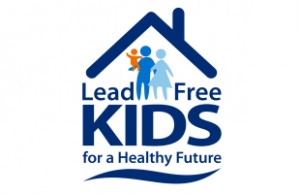EPA Leads During International Lead Poisoning and Prevention Week of Action
By Jane Nishida
Lead exposure remains an issue of concern for children in the United States and across the globe. With the elimination of lead in gasoline, lead in paint is now a principal pathway of exposure for children. While the U.S. has long-established laws limiting paint to less than 90 parts per million, in developing countries, paint can be found to contain more than 100,000 parts per million. The health, social, environmental, and economic impacts are well-documented, and we are leading both domestic and international efforts to protect people from lead exposure.
From October 25-31, during Lead Poisoning Prevention Week, we led and participated in a range of awareness-raising events about the importance of preventing lead poisoning and what we can all do to protect our children from lead. With our counterparts at the Centers for Disease Control and Prevention (CDC), and the Department of Housing and Urban Development (HUD), we have been supporting community and national-level efforts in the U.S. to help solve this issue.
Internationally, we serve as the chair of the Global Alliance to Eliminate Lead in Paint (known as the Lead Paint Alliance), a voluntary, multi-sector partnership working to eliminate lead from household and decorative paint by 2020. In close collaboration with leaders at the United Nations Environment Programme and the World Health Organization, we have led progress toward this goal.
Working with industry partners and dedicated NGOs, we led the development and launch of a regulatory toolkit that will help countries without laws limiting lead in paint to determine and develop their own regulatory regime. To promote the regulatory toolkit, we have been conducting direct outreach to government, industry, and NGO leaders. At the recent International Conference on Chemicals Management, we launched the toolkit and shared pertinent information with world leaders in international chemicals management through events and exhibits. Next, we will plan and participate in an African regional workshop on regulatory development scheduled for December 2-4 in Addis Ababa, Ethiopia.

Patty Beneck of UNEP-RONA delivers remarks during the Lead Paint Embassy Briefing at Embassy Canada. Representatives from 22 countries took part in the event.
During the 2015 International Lead Poisoning Prevention Week of Action, more than 35 countries organized nearly 100 events around the world. In Washington, D.C., we took a lead role in two major international lead-related events. We signed a statement of intent with the Pan-American Health Organization and the CDC to work together on lead paint initiatives in Latin America and the Caribbean. We also organized an embassy briefing at Embassy Canada, attended by ambassadors to the U.S. and environment and science staff from 22 embassies representing all corners of the world.
We remain committed to preventing lead exposure at home and abroad. Communities around the world must become involved in solving this issue. What are some steps we can take? Parents should get their children tested. Teachers need to help educate families. The health community needs to raise awareness of the dangers of lead poisoning. And government leaders around the world can work to establish laws eliminating lead in paint. Working together, we can raise a world of lead free kids.


